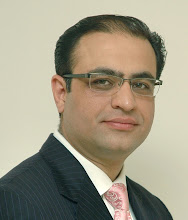Dear Friends,
Here is my article in Mail Today on Atul Dodiya's upcoming art show opening at Vadehra Art Gallery in New Delhi and the price correction that has happened. I saw the images and the works looked quite nice but really 3 works on the basis of images stood out, now sources indicate that the show is sold out. I don't know the identity of the buyers or the motive, I just thought that Atul and Vadehra Art gallery did a smart thing by keeping the price right. I think in a contemporary art market which is an an infancy stage it was quite a welcome decision. Here is the article published on the 19th of February for your reading pleasure.
It is the season of art openings and the curtain is set to go up on many exciting shows this month. If you still haven’t had the time, do check out Resemble Re-Assemble at Devi Art Foundation to view some cutting-edge contemporary art from Pakistan. But that’s not what I am going to dwell upon here. One of the most important openings for the first quarter of 2010 is Atul Dodiya’s Vadehra Art Gallery show on March 5. I’m picking up this show as it offers amazing insights into the Indian contemporary art space. Dodiya, I believe, and so do others in the know, is India’s foremost contemporary artist who also commands the respect of his community.
I’ve seen admiration for him cut across galleries/ collectors. In the boom that drove values to illogically high levels in the Indian art market, the average price of Atul’s works had reached close to a crore. I don’t know who was responsible for it — whether it was his gallery Bodhi, which was representing him at that time, or his own brainwave — but the market was suddenly flooded with scores of his paper works in editions of 12 to 20. Their commercial values were in the range of Rs 6-8 lakh and they were being billed as unique prints because he had done some work on each of them. Then he had a show at Bodhi in Mumbai with 40 watercolours. The sales were brisk and the demand was high. Everyone was happy but the number of works in a speculative art market defied logic, and worse, the quality of this show called Pale Ancestors, was average for his talent.
Even before the market started turning, Dodiya’s values started coming down as there was too much supply and the values were too high — mediocre 30-by-22-inch watercolours were being offered for Rs 20 lakh! As the demand started going down, suddenly there were no takers for his work at those price points. He was not seen at any important show as far as I can remember. The values crashed and Dodiya’s works priced at Rs 20 lakh went for Rs 6 lakh, that too if they found a buyer at the auctions. There was no demand for any of his other works in the secondary market. So, I was happy to receive images of the upcoming Atul Dodiya show passed on by a fellow collector. Note that the images were being circulated a good 45 days before the show is scheduled to open. The works are significant and most of them are 5ft-by-8ft, quite lush in technique and content. What’s commendable is the artist’s maturity and the Vadehra Art Gallery’s offering of these works at Rs 30-36 lakh. WHO better to introduce a price correction and leave money on the table for the collectors than one of the country’s respected contemporary artists.
This is one the best pricing decisions in a market full of greed and speculation. The credit for taking a bold decision to mark down values for really significant works must be given both to Dodiya and his gallery. Sources say he is already sold out — a month before its opening day — because it offers both quality and value. In the last few months, I’ve seen numerous shows open where canvases have been illogically priced, and to anyone who disputed the logic, the standard answer was that you need to appreciate the aesthetics and not focus only on prices. We saw mid-tier contemporary artists out of tune with reality and had top galleries justifying values in 2009 as being the same as in 2007, which was illogical because in 2007, the Indian economy was on an overdrive. On a different note, the Saffronart auction catalogue for March is now online, and you can make out that the contemporary art market is recovering fast, with a much better variety available for buying this time. My pick of the lot in the contemporary space is the stunning T.V. Santhosh canvas. The whole of 2009 did not see any of his recent works being consigned and this is estimated at Rs 30-40 lakh.
I like the fact that the estimates for most of the works are in line and Saffronart has done a good job in keeping them low. I can sense a recovery for the contemporary art market but would advise you all to be careful. Remember the rule: Buy only what you like and if you have decided that you need to own a particular work, do not get carried away. And do your research on the pricing.
Cheers
Kapil Chopra is Senior Vice President of Oberoi Hotels & Resorts.He writes a blog on collecting and investing in Indian Contemporary Art at www.indianartinvest.blogspot.com.He also writes for The Telegraph newspaper in the Sunday magazine " Graphiti" every fortnight. In Delhi, he writes for "The Mail Today " newspaper and "First City" magazine.














